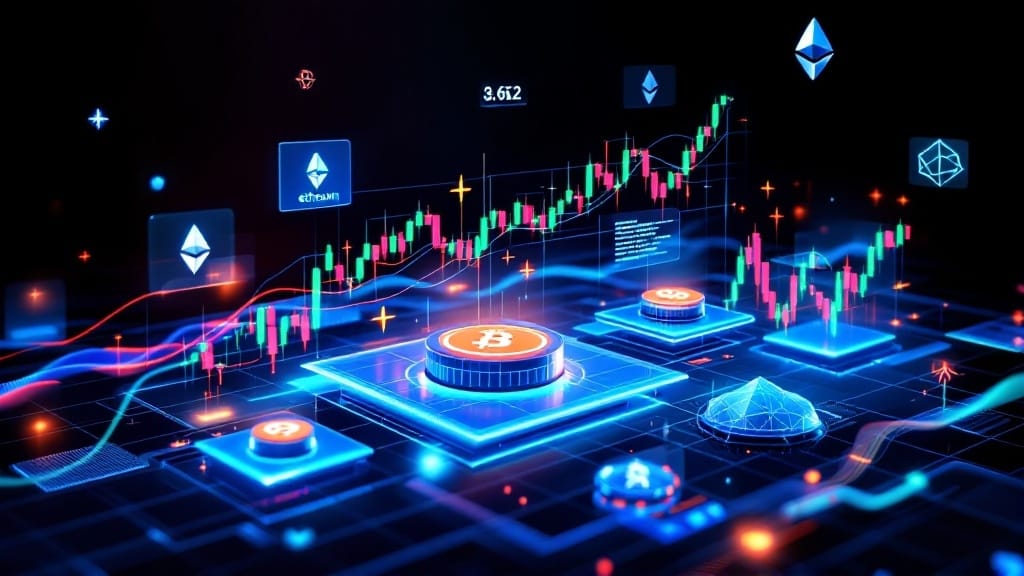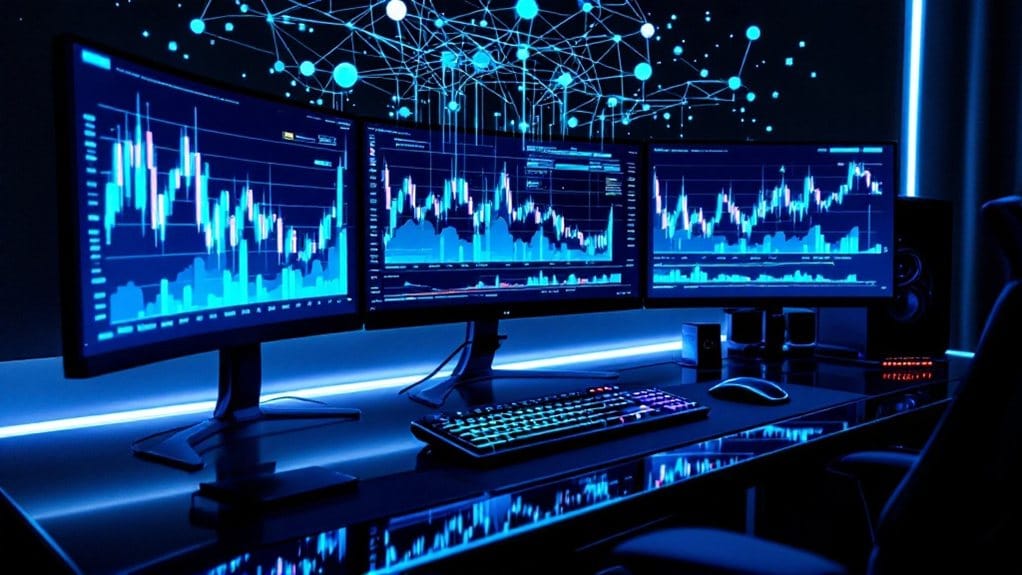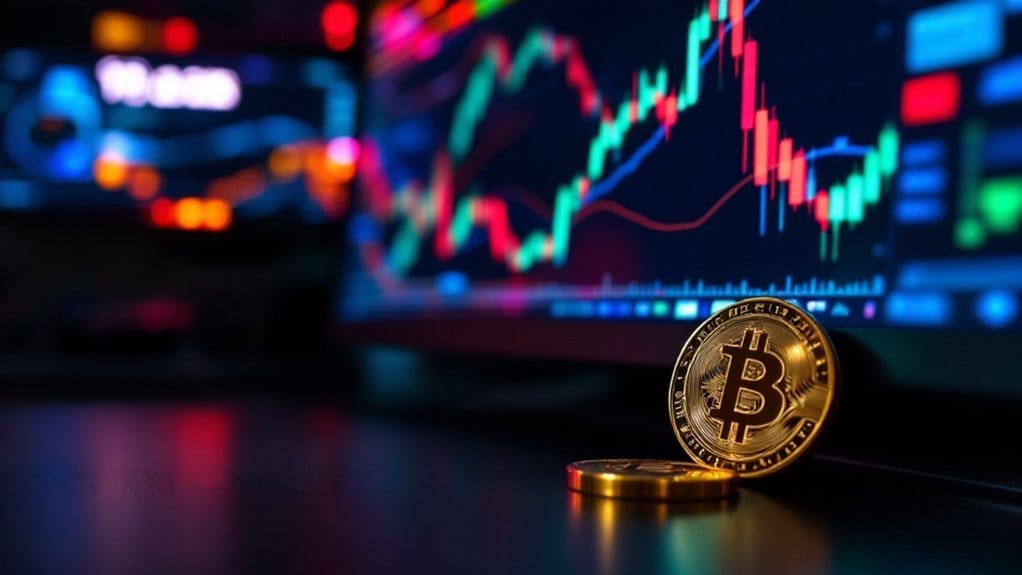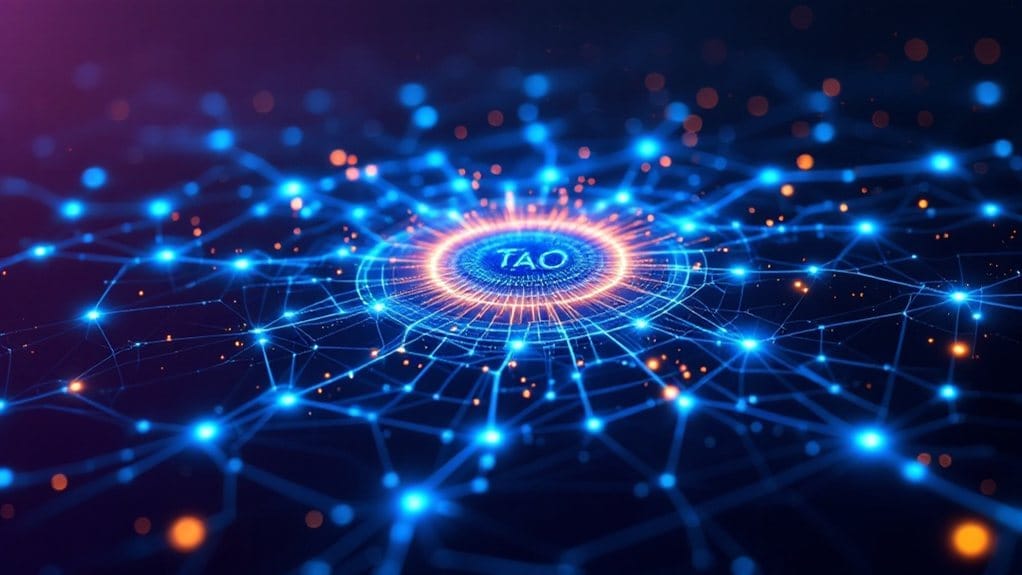AI-driven cryptocurrency trading employs sophisticated algorithms and machine learning to analyze vast market data streams, achieving up to 85% accuracy in trend prediction. Trading bots like CryptoHopper and platforms such as TradingView process multiple data points simultaneously, including price action, volume, and sentiment analysis, while eliminating emotional bias. Through continuous 24/7 monitoring and automated responses to market changes, AI systems execute precise trades based on predefined strategies. Understanding these advanced tools reveals new possibilities for digital asset trading optimization.

As cryptocurrency markets continue to evolve at a breakneck pace, artificial intelligence has emerged as a transformative force in trading, fundamentally altering how investors approach digital asset management. AI systems process vast amounts of market data at unprecedented speeds, executing trades with precision while eliminating emotional biases that often plague human traders, such as fear and greed.
These sophisticated systems operate continuously, monitoring market conditions 24/7 and responding to opportunities that human traders might miss during off-hours. Regular system audits help prevent algorithm errors that could lead to significant trading losses. Portfolio diversification through smart data analysis helps manage and mitigate investment risks. The integration of decentralized finance applications has further enhanced yield optimization and risk management capabilities.
The implementation of AI in crypto trading relies heavily on advanced algorithms and machine learning models, which have demonstrated up to 85% accuracy in predicting market trends. Traders can utilize platforms like CryptoHopper and TradingView to analyze market data, while services such as GNY.io provide specialized machine learning tools for cryptocurrency analysis.
These platforms process multiple data streams simultaneously, including price action, trading volume, social media sentiment, and news events, synthesizing this information into actionable trading signals.
The integration of AI trading bots has transformed the execution of trading strategies, allowing for instantaneous responses to market changes and the simultaneous monitoring of multiple trading pairs. These automated systems excel at performing repetitive tasks with consistent precision, while adapting their strategies based on real-time market conditions through sophisticated machine learning algorithms.
However, successful implementation requires careful consideration of platform selection, thorough data collection, and thorough strategy development through backtesting.
Despite its advantages, AI-driven crypto trading faces notable challenges, particularly in dealing with the inherent volatility of cryptocurrency markets. Successful traders typically begin by selecting appropriate AI-powered platforms, gathering extensive historical data, and developing personalized strategies aligned with their risk tolerance.
The implementation process involves rigorous backtesting before deploying strategies in live trading environments, ensuring that the AI systems can effectively navigate market fluctuations while maintaining predetermined risk parameters.
FAQs
How Much Initial Capital Do I Need to Start Ai-Powered Crypto Trading?
The recommended initial capital for AI-powered crypto trading ranges from $5,000 to $10,000, which covers vital startup costs.
This amount accounts for bot development expenses ($2,000-$5,000), monthly infrastructure costs ($50-$200), and exchange fees.
Alternatively, traders can opt for managed solutions with lower upfront costs ($15-$100 monthly), though maintaining adequate trading capital remains important for risk management and sustainable operations.
Can AI Trading Bots Work Effectively During Crypto Market Crashes?
AI trading bots can effectively operate during crypto market crashes through rapid execution and emotion-free decision-making.
Their ability to analyze vast amounts of real-time data enables quick responses to market downturns, while built-in risk management features like stop-loss orders help minimize losses.
However, their effectiveness depends on quality historical data and proper configuration, as unprecedented market events can challenge their predictive capabilities.
What Programming Skills Are Required to Develop Custom AI Trading Algorithms?
Developing custom AI trading algorithms requires proficiency in Python, particularly with libraries like TensorFlow, Pandas, and NumPy for data manipulation and machine learning.
Strong mathematical and statistical skills are crucial for implementing quantitative analysis methods and time series forecasting.
Moreover, developers need expertise in database management, API integration, and version control systems like Git to maintain and optimize trading algorithms effectively.
How Often Should I Retrain My AI Models for Optimal Trading Performance?
AI model retraining frequency depends on market volatility and data quality, with highly volatile markets requiring more frequent updates.
A general baseline suggests retraining every 1-2 weeks for stable markets, while volatile conditions may necessitate daily adjustments.
Continuous monitoring systems should evaluate model performance against key metrics, triggering automatic retraining when accuracy drops below predetermined thresholds or when significant market shifts occur.
Are AI Trading Strategies More Successful With Specific Cryptocurrencies or Trading Pairs?
AI trading strategies generally perform better with established cryptocurrencies like Bitcoin and Ethereum due to their higher liquidity and data availability.
These major cryptocurrencies offer extensive historical data, allowing AI models to identify patterns more effectively.
Trading pairs involving BTC or ETH against stablecoins typically yield better results as they provide consistent market depth, lower spreads, and more predictable volatility patterns for AI algorithms to analyze.









